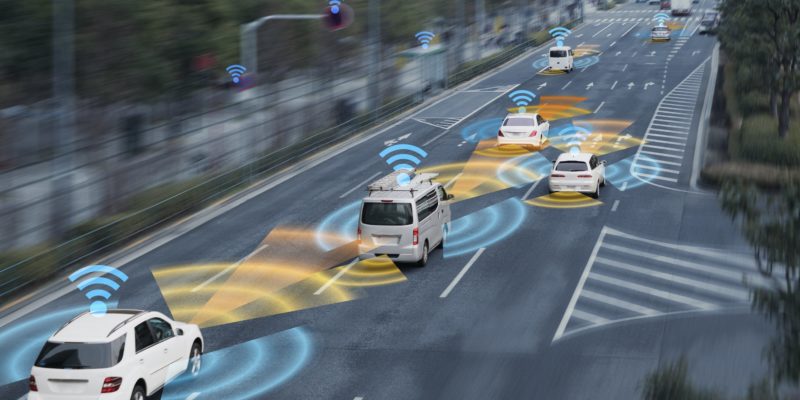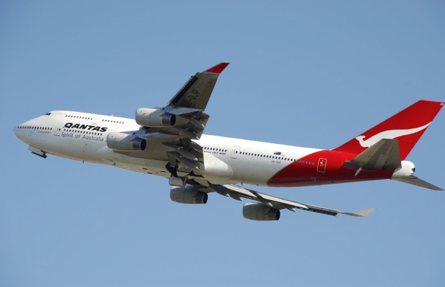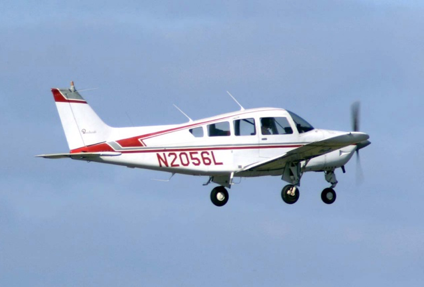Co-operative vehicle to everything dedicated short range communications.
What is it? What can it do?
Have you ever been stuck in traffic, wondering what the hold up ahead was? Or wished there was some way to get everyone to adopt the same speed based on the traffic conditions, rather than be stuck in the monotony of agonising stop start congestion.
In the near future, this may be possible thanks to V2X technology. So, what is V2X? V2X stands for vehicle to everything, representing connected vehicle technology. Comprising a simultaneous transmit and receive module that can send or receive around 10 messages per second.
A Network of Communication Modules
Albeit the term V2X may bring emphasis onto the vehicle to component, it is important to realise that the system encompasses a network of communication modules that are generally either an on-board unit (OBU) or a roadside unit (RSU).
The on-board unit (OBU) is the transceiver that is on-board any moving object. Whether that be a car, bus, truck, cyclist or even pedestrian. Using wireless communication and location data to transmit the location, speed and direction. Along with other chosen criteria such as braking, hazards and indicating.
The roadside unit (RSU), installed on the road infrastructure connects to the vehicles on the network, receiving safety messages from vehicles and signal request messages from emergency vehicles, at the same time broadcasting intersection information and road hazard warning messages.
A Common Language
Although a variety of frequencies and technologies can be used, such as Bluetooth, Wireless 802.11p and 4G/5G. It is hoped that as the technology is embraced, the 5.9 Ghz frequency band will be shared for both cellular and wi-fi, with the top 20 Mhz dedicated solely V2X communications.

Regardless, the key to transmitting a common language amongst devices becomes an important factor. This is where the one constant of each geographic location on the surface of the earth comes into play. Converting a wireless signal from an on-board unit into a calibrated geographic location in the form of latitude and longitude, along with speed, direction and other useful information.
Co-operative in Nature
Now part of an interconnected network of transceivers, co-operation becomes a key point in a holistic crash avoidance technology viewpoint. Aiming to warn drivers of potentially dangerous situations in 360 degrees of awareness up to 300m away. Being co-operative in nature, vehicle to everything (V2X) can integrate a range of other connections to enhance awareness and provide detection; which are vehicle to infrastructure (V2I), vehicle to vehicle (V2V) and being vehicle to everything…anything else you wish to include in the network in the future.
The Value of Information
This information is also valuable for providing route specific information and incident zone warnings. Much like your mobile phone navigation system already provides for you, showing areas of congestion in red and providing alternate faster routes. In essence, the fundamentals of this technology are already in play, embracing connectivity through aggregated location data contributing to efficiency through navigation route messaging.
Another example of a similar technology already in use, is ADSB which is on airplanes. Like V2X, ADSB utilises the transmission and reception of location data to help avoid mid-air collisions and increase awareness for pilots. Although commercial aircraft like the 747 will have this technology as standard, the humble retro Cessna can also fit an aftermarket on board unit (OBU), providing and benefiting from the same awareness and information.
What about privacy? The first thing to remember is the V2X keeps personal information private and it does not track your vehicle. Simply transmitting the moving objects location data and warning signals. This is important to realise, as it is about warnings not control. Warnings such as rapid braking ahead or information regarding an accident or a blind spot.
OEM and Aftermarket Integration
Many vehicle manufacturers have been fitting some form of dedicated shortrange communications (DSRC) or V2X module into their vehicles for the last few years. However, just like the Cessna with an ADSB Transceiver, any vehicle can also fit an aftermarket unit, to contribute to and benefit from V2X information and co-operative awareness messages.
From an efficiency standpoint, V2X can help minimise public transit delay, through traffic signal priority. This also helps decrease emergency vehicle response time (EVRT) with the same traffic signal priority, enhanced even further by providing awareness to other road users by messages such as ‘emergency vehicle approaching’. Enhancing safety and mobility.
50% Reduction in Incidents
For the most part, the safety aspect of V2X transcends all other benefits. With the ability to provide direct real time information that is safety critical and non-safety critical. With the ability to sense incidents and provide road hazard warnings regarding road works, accidents and vicinity of vulnerable road users such as cyclists. As well as traffic flow control such as traffic signal priority, left turn assist and intersection movement assist. Of which, preliminary analysis shows an estimated 50% reduction in incidents at intersections due to V2X integration.
Infrastructure for the Future
The overall V2X system and concept is about setting up infrastructure for the future, creating a safe, interoperable networked wireless communication amongst vehicles, infrastructure and vulnerable road users. Ultimately, V2X aims to keep all road users safe through detection, awareness and fundamentally prevention of road incidents through crash avoidance.
By Garry Taylor
Armitage Group
A FLIR Premium Partner







